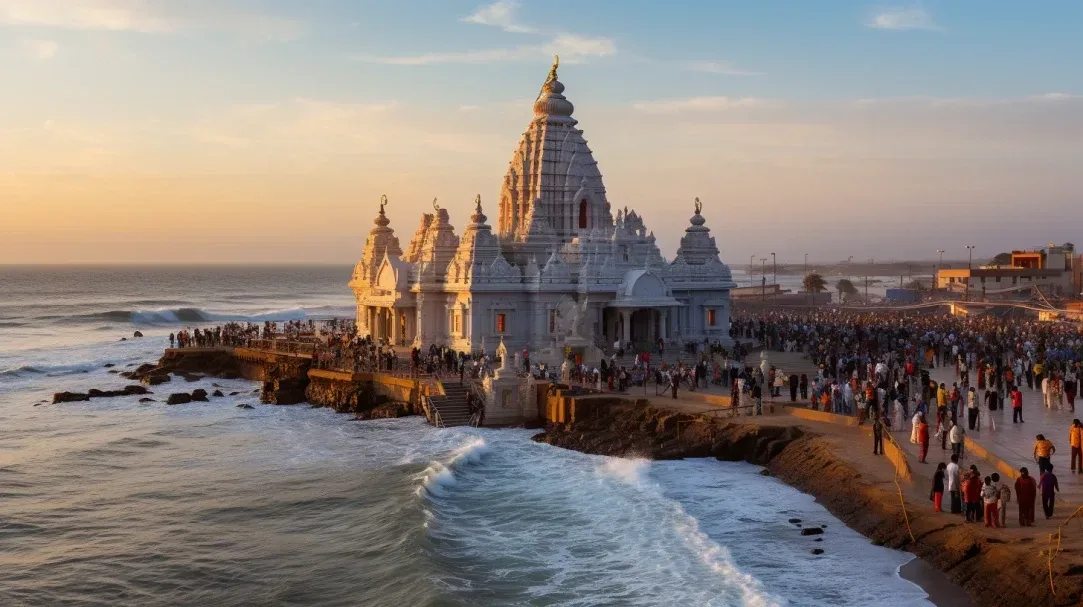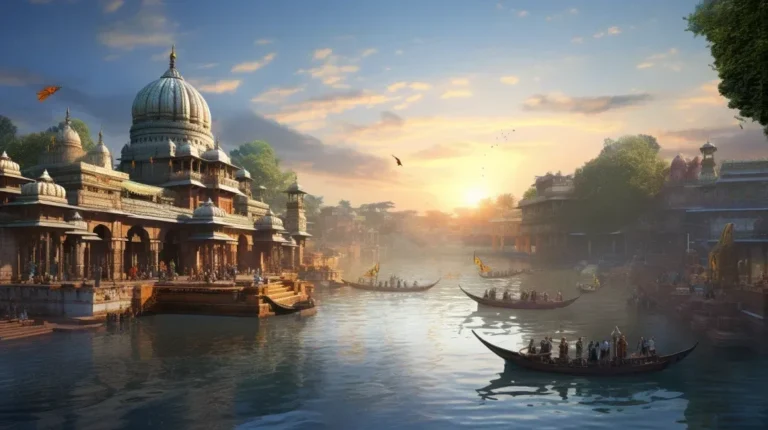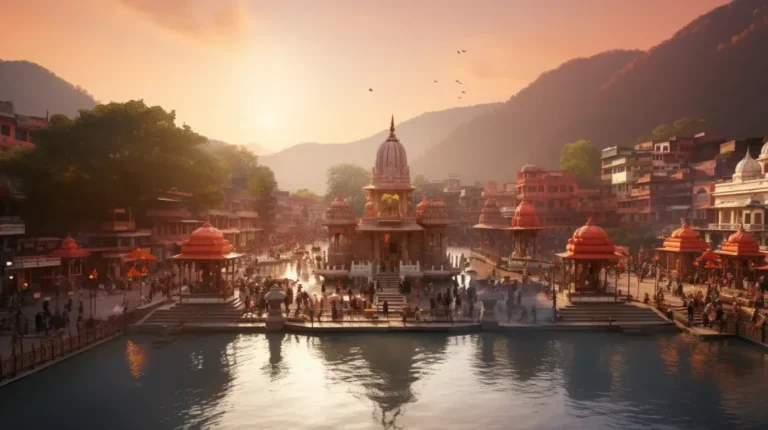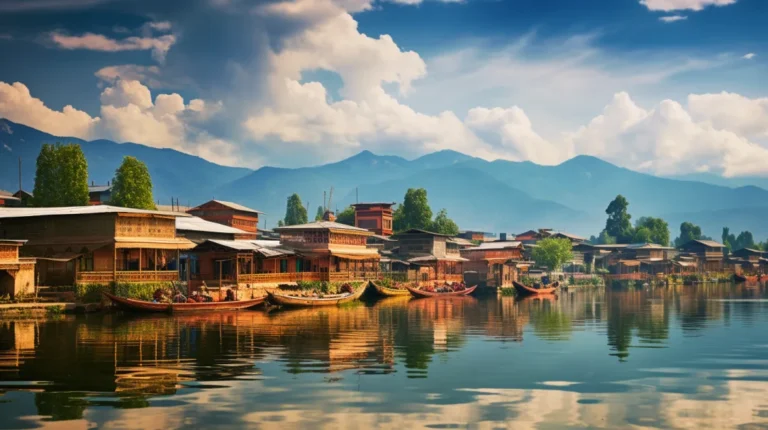Somnath Revealed: The Ultimate Guide to Planning Your Perfect Pilgrimage
‘Somnath Revealed: The Ultimate Guide to Planning Your Perfect Pilgrimage’ is a comprehensive and informative handbook for those seeking to embark on a spiritual journey to the sacred Somnath Temple.
This guide offers a wealth of knowledge about the history, significance, and rituals associated with Somnath, making it an essential resource for anyone desiring a deeper understanding of this revered pilgrimage site.
From the best time to visit, to tips on reaching Somnath and finding suitable accommodations, this guide covers all aspects of planning a meaningful and fulfilling pilgrimage experience.
Whether you are a seasoned traveler or a first-time visitor, ‘Somnath Revealed’ will equip you with the knowledge and insights necessary to plan a perfect and memorable trip to this holy destination.
Key Takeaways
- Somnath Temple is a sacred pilgrimage site dedicated to Lord Shiva, known for its resilience and cultural significance.
- The best time to visit Somnath Temple is during the winter months (November to February) when the weather is pleasant and the crowd levels are manageable.
- Transportation options to Somnath include airports in Diu, Rajkot, and Porbandar, as well as the Veraval Railway Station. The city is also well-connected by road.
- Accommodation choices in Somnath range from budget-friendly options like guesthouses and budget hotels to luxury accommodations near the temple and unique stays like heritage havelis and beachside resorts.
The History of Somnath Temple
The history of the Somnath Temple dates back centuries, with its origins rooted in ancient traditions and cultural significance.
Situated in the Indian state of Gujarat, this magnificent temple holds immense religious importance for Hindus.
Legend has it that the original temple was built by Lord Soma, the Moon God, himself.
Over the years, the temple has witnessed destruction and reconstruction multiple times, making it a symbol of resilience and faith.
It was famously plundered by foreign invaders, including Mahmud of Ghazni, who looted its treasures and destroyed its structure.
However, each time it was destroyed, the temple rose again, representing the undying spirit of devotion.
Today, the Somnath Temple stands as a testament to the rich history and spirituality of the region, attracting millions of pilgrims and tourists from around the world.
Significance of Somnath in Hinduism
Renowned for its religious and cultural significance, Somnath holds a prominent place in Hinduism as a sacred pilgrimage site. Located on the western coast of Gujarat, India, the Somnath Temple is dedicated to Lord Shiva, one of the most revered deities in Hinduism.
The name ‘Somnath’ translates to ‘Lord of the Moon,’ symbolizing the divine connection between the moon and Lord Shiva. According to Hindu mythology, this is the place where Lord Krishna performed the last rites of his Yadava clan after the Mahabharata war. The temple has been destroyed and rebuilt several times throughout history, each time reflecting the resilience and faith of the devotees.
It attracts millions of pilgrims each year, seeking spiritual solace and blessings from Lord Shiva. The divine aura, architectural grandeur, and the tranquil Arabian Sea backdrop make Somnath a truly unforgettable pilgrimage experience for Hindus worldwide.
Best Time to Visit Somnath
When planning a pilgrimage to Somnath, it is important to consider the best time to visit. The weather plays a crucial role in ensuring a comfortable and enjoyable experience, with the months of October to February offering pleasant temperatures and minimal rainfall.
Another factor to consider is the crowd levels during different seasons, as visiting during off-peak times can help avoid long queues and overcrowding.
Additionally, it is worth considering any festivals or events that may impact your visit, as these can provide a unique and vibrant atmosphere to your pilgrimage.
Weather Considerations for Visiting Somnath
For a seamless pilgrimage experience, it is essential to consider the weather conditions when planning your visit to Somnath.
Situated on the coast of Gujarat, Somnath experiences a tropical climate with distinct seasons. The best time to visit Somnath is during the winter months of November to February when the weather is pleasant and cool. The temperature ranges from 15 to 25 degrees Celsius, making it ideal for exploring the famous Somnath Temple and other nearby attractions. During this time, you can enjoy clear skies, gentle breezes, and comfortable temperatures, allowing you to fully immerse yourself in the spiritual atmosphere of the pilgrimage. However, it is important to pack warm clothing as evenings can get chilly.
Avoid visiting during the monsoon season (June to September) when heavy rainfall can disrupt travel plans and make sightseeing difficult. By considering the weather conditions, you can plan your visit to Somnath at the optimal time to ensure a memorable and comfortable pilgrimage experience.
Crowd Levels During Different Seasons
The number of visitors to Somnath varies significantly across different seasons, impacting the ideal time to plan your pilgrimage. Understanding the crowd levels during different seasons will help you choose the best time to visit.
Here are three key points to consider:
- Winter (October to February): This is the peak season for tourists in Somnath. The cool and pleasant weather attracts a large number of visitors, especially during festivals like Diwali and Christmas. Expect the highest crowd levels during this time.
- Summer (March to June): The summer season witnesses a decrease in tourist footfall due to the scorching heat. If you prefer a quieter atmosphere and don’t mind the heat, visiting Somnath during this time can be a good option.
- Monsoon (July to September): The monsoon season brings rainfall to Somnath, making it less crowded. The lush green surroundings and the pleasant weather make it a serene time to visit.
Understanding the crowd levels during different seasons will allow you to plan your pilgrimage accordingly.
Now let’s explore how festivals and events impact the overall experience in Somnath.
Festivals and Events Impact
Considering festivals and events, the impact they have on the overall experience in Somnath greatly influences the ideal time to plan your pilgrimage.
Somnath is not just a place of religious significance, but also a hub of cultural celebrations.
The most prominent festival celebrated here is the Maha Shivaratri, which witnesses a massive influx of devotees from all over the country. This festival, dedicated to Lord Shiva, is celebrated with great fervor and enthusiasm. The temple is beautifully adorned with lights and flowers, and the air is filled with chants and devotional songs.
Another important event is the Somnath Mahotsav, a three-day extravaganza that showcases the rich cultural heritage of Gujarat through various performances and exhibitions.
These festivals and events add an extra layer of spiritual and cultural significance to your pilgrimage, making it an unforgettable experience.
How to Reach Somnath
Reaching Somnath can be accomplished by following well-connected transportation routes. Here are three convenient ways to reach this sacred destination:
- By Air: The nearest airport to Somnath is Diu Airport, located approximately 90 kilometers away. From there, you can hire a taxi or take a bus to reach Somnath. Other nearby airports include Rajkot Airport and Porbandar Airport, which are both around 200 kilometers away.
- By Train: The Veraval Railway Station is the closest railhead to Somnath, situated just 7 kilometers away. Trains from major cities like Ahmedabad, Mumbai, and Delhi connect to Veraval. From the railway station, you can easily find local transportation options to reach Somnath.
- By Road: Somnath is well-connected by road, and you can easily reach here by bus or taxi. State-run buses and private taxis are available from cities like Ahmedabad, Rajkot, and Dwarka.
With these transportation options, reaching Somnath is a hassle-free experience. Now, let’s move on to explore the accommodation options in Somnath.
Accommodation Options in Somnath
When it comes to planning your pilgrimage to Somnath, finding the right accommodation can make all the difference in ensuring a comfortable and enjoyable stay.
Whether you’re looking for budget-friendly options or seeking a luxurious experience, Somnath offers a range of choices to suit every traveler’s needs.
Additionally, for those seeking a unique and immersive experience, there are accommodations available near the temple that provide a close proximity to the divine energy of the holy site.
Budget-Friendly Lodging Choices
With a range of budget-friendly options available, finding affordable accommodation in Somnath is easily achievable. Whether you are a solo traveler or visiting with your family, there are several lodging choices that cater to different budgets and preferences.
Here are three budget-friendly options to consider:
- Guesthouses and Dharamshalas: Somnath offers a variety of guesthouses and dharamshalas that provide basic amenities at affordable rates. These accommodations are often run by religious organizations and offer a peaceful atmosphere for pilgrims.
- Budget Hotels: There are numerous budget hotels in Somnath that offer comfortable rooms and essential amenities at affordable prices. These hotels are conveniently located near the main attractions and provide a good value for money.
- Homestays: For a more authentic experience, consider staying in a homestay. Somnath has several homestays that offer comfortable rooms in local homes, allowing you to experience the warmth and hospitality of the locals while keeping your budget in check.
No matter which option you choose, you can enjoy a comfortable stay in Somnath without breaking the bank.
Luxury Accommodation Recommendations
For travelers seeking a luxurious stay in Somnath, there are several high-end accommodation options available. From opulent resorts to boutique hotels, these establishments offer a perfect blend of comfort, elegance, and impeccable service.
One such option is the luxurious hotel located near the famous Somnath Temple. With its spacious rooms, exquisite interiors, and panoramic views of the temple, it provides a truly immersive experience.
Another top-notch choice is a beachfront resort that offers private villas, each equipped with modern amenities and a personal plunge pool. Guests can relax and rejuvenate in the resort’s spa, indulge in gourmet dining options, or simply bask in the serenity of the pristine beach.
These luxury accommodations ensure that your stay in Somnath is nothing short of extraordinary.
Unique Stays Near Temple
To enhance your pilgrimage experience, consider staying at unique accommodations near the Somnath Temple. These accommodations offer a one-of-a-kind experience that combines comfort and spirituality. Here are three options for unique stays near the temple:
- Heritage Haveli: Immerse yourself in the rich history of Somnath by staying at a heritage haveli. These traditional mansions have been converted into guesthouses, offering a glimpse into the bygone era. Enjoy the intricate architecture, antique furniture, and personalized service.
- Tented Camps: For a more adventurous experience, opt for a tented camp near the temple. These camps provide a unique opportunity to connect with nature while still enjoying modern amenities. Fall asleep under the starry sky and wake up to the sound of birds chirping.
- Beachside Resorts: Indulge in a serene beachside retreat just a stone’s throw away from the temple. These resorts offer breathtaking views of the Arabian Sea and provide a tranquil ambiance for relaxation. Take long walks on the pristine beaches and witness mesmerizing sunsets.
Choose one of these unique accommodations to make your pilgrimage to Somnath even more memorable and enriching.
Must-See Attractions in and Around Somnath
Featuring a plethora of captivating attractions, both within the city and its surrounding areas, Somnath offers an unforgettable experience for pilgrims and tourists alike. From historical landmarks to natural wonders, there is something for everyone to explore and marvel at in this sacred destination. To help you plan your visit, here are some must-see attractions in and around Somnath:
| Attractions | Description |
|---|---|
| Somnath Temple | A significant pilgrimage site, the Somnath Temple is dedicated to Lord Shiva and is believed to be one of the twelve Jyotirlingas in India. It showcases exquisite architecture and offers a serene atmosphere for devotees. |
| Triveni Sangam | Located at the confluence of three holy rivers – Hiran, Kapila, and Saraswati, Triveni Sangam is considered a sacred spot for taking a dip and performing religious rituals. It is believed to cleanse the soul and bring spiritual rejuvenation. |
| Junagadh Gate | An imposing structure that serves as the entrance to Somnath, the Junagadh Gate is a historical landmark. It offers a glimpse into the rich heritage and architectural beauty of the region. |
| Bhalka Tirth | This sacred site is believed to be the place where Lord Krishna was accidentally wounded and left his mortal body. It houses a temple and a serene garden, attracting devotees and history enthusiasts alike. |
These attractions not only provide insight into the religious and cultural significance of Somnath but also offer a chance to immerse oneself in the beauty and tranquility of the surroundings. Whether you are seeking spiritual enlightenment or simply want to explore the history and natural wonders of the region, Somnath has something to offer for every traveler.
Rituals and Practices at Somnath Temple
At the Somnath Temple, devotees engage in various rituals and practices to deepen their spiritual connection with Lord Shiva. Here are three significant rituals and practices that take place at the temple:
- Abhishekam: Devotees participate in the sacred ritual of Abhishekam, where they pour holy water, milk, honey, ghee, and other offerings on the Shiva Lingam. This ritual symbolizes the cleansing of the soul and seeking blessings from Lord Shiva.
- Aarti: Aarti is a beautiful ceremony where devotees offer prayers to Lord Shiva using lamps, incense, and flowers. The rhythmic chanting of mantras creates a divine atmosphere, and the fragrance of incense fills the air, enhancing the spiritual experience.
- Pradakshina: Devotees perform Pradakshina, the act of circumambulating the sanctum sanctorum of the temple. Walking in a clockwise direction around the Shiva Lingam symbolizes surrendering oneself to the divine presence and seeking blessings.
Engaging in these rituals and practices at Somnath Temple allows devotees to connect with their spirituality and experience a profound sense of peace and devotion.
Now, let’s move on to the next section and explore some tips for a meaningful pilgrimage experience.
Tips for a Meaningful Pilgrimage Experience
What are some essential tips for a meaningful pilgrimage experience at Somnath Temple? Visiting a sacred site like the Somnath Temple can be a transformative and deeply spiritual experience. To ensure a meaningful pilgrimage, here are some tips to consider:
| Tips for a Meaningful Pilgrimage Experience | ||
|---|---|---|
| 1. Research and Learn | 2. Practice Respect and Humility | 3. Connect with the Local Culture |
| Before your visit, take the time to research the history, significance, and rituals of the temple. This will help you understand and appreciate the spiritual significance of your pilgrimage. | When visiting the temple, it is important to approach with respect and humility. Follow the guidelines and rules set by the temple authorities and be mindful of the sanctity of the surroundings. | Immerse yourself in the local culture to enhance your pilgrimage experience. Engage with the locals, participate in cultural activities, and try local cuisine to gain a deeper understanding of the place. |
These tips will help you make the most of your pilgrimage experience at Somnath Temple. Remember, the key to a meaningful journey lies in being open-minded, respectful, and willing to embrace the spiritual energy that surrounds the temple.
Frequently Asked Questions
Are There Any Restrictions or Guidelines for Visitors at the Somnath Temple?
Visitors to the Somnath temple are subject to certain restrictions and guidelines. These measures ensure the sanctity and smooth functioning of the pilgrimage site. It is important for visitors to be aware of and adhere to these regulations for a meaningful and respectful experience.
What Are the Local Customs and Traditions That Visitors Should Be Aware of While Visiting Somnath?
When visiting Somnath, it is important for visitors to be aware of the local customs and traditions. These include dressing modestly, removing shoes before entering the temple, and showing respect to the deities and priests.
Are There Any Specific Dress Code Requirements for Entering the Somnath Temple?
When visiting the Somnath Temple, it is important to adhere to specific dress code requirements. These guidelines ensure respect and reverence for the sacred site. By dressing modestly and appropriately, visitors can fully immerse themselves in the spiritual experience.
Is Photography Allowed Inside the Somnath Temple Premises?
Yes, photography is allowed inside the premises of the Somnath Temple. Visitors are permitted to capture the beauty and sanctity of the temple through their cameras, ensuring they adhere to any specific guidelines or restrictions in place.
Are There Any Specific Rituals or Ceremonies That Visitors Can Participate in at the Somnath Temple?
There are several specific rituals and ceremonies that visitors can participate in at the Somnath Temple. These include the morning aarti, the evening aarti, the Rudrabhishek ceremony, and the Abhishek ceremony, all of which offer a unique spiritual experience for pilgrims.
Conclusion
In conclusion, planning a pilgrimage to Somnath Temple is a journey filled with history, spirituality, and cultural significance. From exploring the temple’s rich history to participating in rituals and practices, visitors can immerse themselves in a truly meaningful experience.
With a range of accommodation options and must-see attractions in the area, Somnath offers a unique blend of spirituality and tourism. Embark on this pilgrimage and let the divine energy of Somnath Temple guide you on a transformative journey of the soul.







